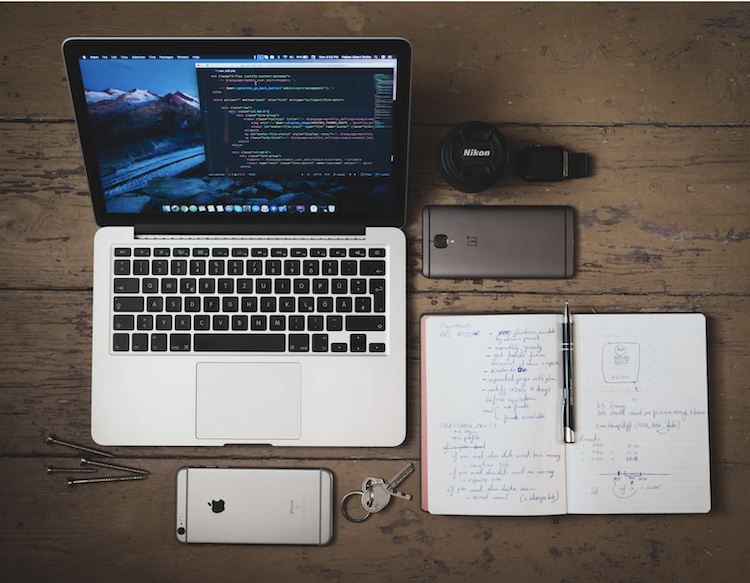Usability testing gives a clear assessment of how well your users expectations met. And to ensure that this testing result does not catch you off guard, we have to put together a bunch of pointers for your developers and designers to take care of in the initial stages of the app development.
Developers need to look out for
Accessibility norms
Inclusive practice is now being implemented across apps and websites. Like adding alternate text to images, including captions for audio and video inputs, a good color contrast ratio between the background and the text, and proper labels for any form fields for facilitating user inputs. These are some basic norms that are expected to be present in all apps.
Run a check for all possible crash and hang
When testing for crash and freeze, go for random selection of buttons and see if the app crashes because of it. Switch between pages before they are completely loaded, try to quit the app in between, and go on selecting interactions in a haphazard way. Check how your app will run on various network speeds. All these tests will help in spotting any abnormal behaviour that your app may showcase and increase your app’s usability.
Supporting multiple languages
Knowing that your app supports multiple languages makes it easier to launch across different countries. By removing the language barrier, you will be able to cater to the global audience.
Loading speed of your app
A slow app is bound to have a high bounce rate. The quicker your app downloads and starts, more will be the chances of longer user interaction. You will lower the possibility of the user uninstalling your app.
Minimum user input and autofill to be enabled
Lengthy forms turn your users away very quickly. And even if you can not cut down on the form fields, make sure that they support autofill. This will reduce your user’s input efforts and engage with your apps for longer durations.
Varied platforms and versions
Building apps for iOS and Android are different in many ways. And these different platforms demand individual attention as well. Additionally, in Android, you will need to test across different devices. Look out for your app’s compatibility across different versions be it Android 5.0 or Android 10.0 or iOS 13.
Designers need to consider these factors
Easy navigation
Your app’s navigation has to be intuitive for the user. You can ensure this by utilizing research methods like card sorting where you invite prospective users to evaluate your information architecture. They will organize topics into categories which they think is right and help you label these as well. This will give you a good insight into how your users would like your app’s navigation. Thinking as a user and not as a designer will ensure an app with easy navigation.
Onboarding tutorial
Your onboarding tutorial should be clear and concise. There should be an option to pause it, resume and even quit the tutorial as per the user’s wish. Thus, your onboarding need not be mandatory for all. This will be greatly appreciated by the users who enjoy exploring apps on their own.
Landscape mode
Landscape mode often gets missed out when developing apps. But simply enabling landscape mode is also not the solution. Your app’s elements must align themselves neatly in both the modes. Also landscape mode becomes imperative when there is video content in your app.
Least number of steps
To meet the user’s goals, be it making a purchase, or getting some information, or changing shipping address, all need to be done in minimum possible steps. The lesser pages to scroll, steps to do, data to enter, the closer your user is to achieving their goals.
Grids for designing
Grids give a consistent look to your app. When you use grids, the chances of cluttered designs are reduced significantly. The visual hierarchy, margins and spacing all come together easily because of the presence of grids. The placement of elements also becomes better.
Designing for finger’s interaction
Our fingers need bigger buttons and interactions when compared to cursors. Ideal size of the buttons happen to be between 42 pixels to 72 pixels. The space between these buttons can vary accordingly, the range being 12 pixels to 48 pixels. This will improve your app’s usability.
Your mobile app can be tested at various stages via different methods.
The most common ways
Putting together a small focus group
Conducted at the prototyping stage, focus groups give valuable insights about their expectations from an app. Selecting an ideal set of 6-8 users and working on their feedback will give a good direction for your app building.
Testing on different devices
You should test your app on multiple devices to ensure the same user experience. This will also help in fixing any app misbehavior.
Invite people for app testing via emails
Send out emails after your app is built. This will result in a bigger testing group which in turn helps in building good consensus over the testing findings. You can include some incentives like coupons, discounts, and deals to encourage them to participate in your app’s usability testing.
Involve people from your social circle
If people from your social circle like friends and family members fit in the ideal user category, you can invite them to test the app.
Developing an app that will get your users hooked is not a piece of cake. But keeping in mind the above mentioned points will lessen some of the common roadblocks.
Contact our mobile app development team now.















